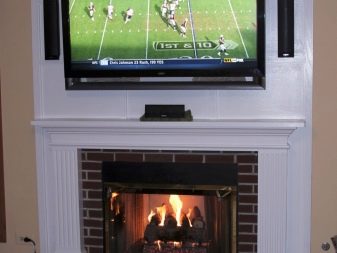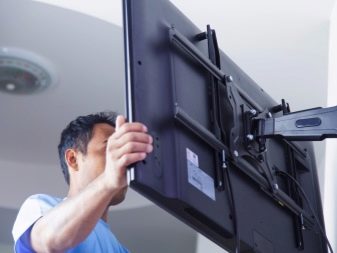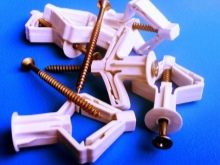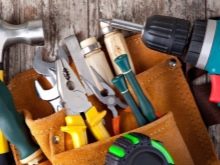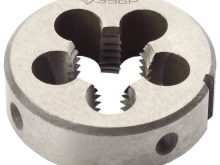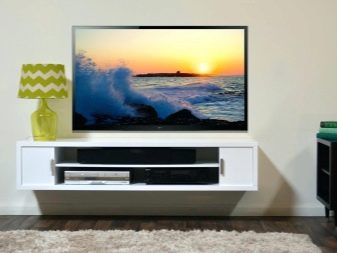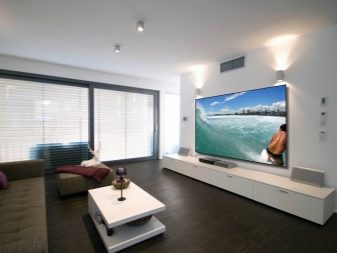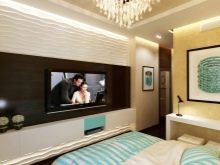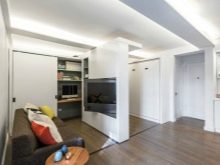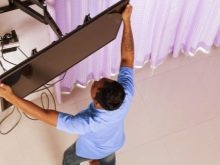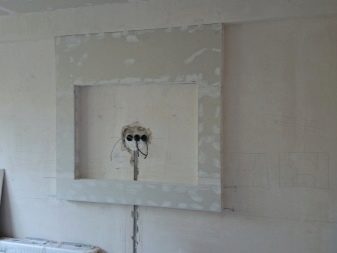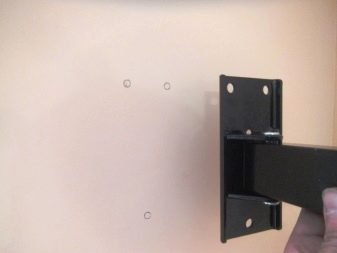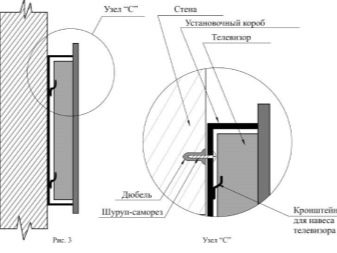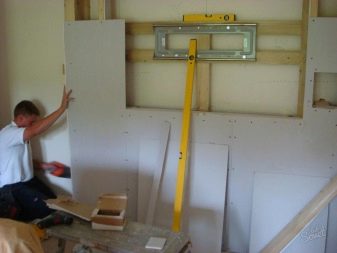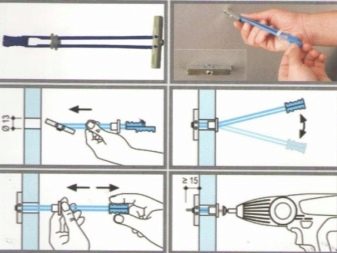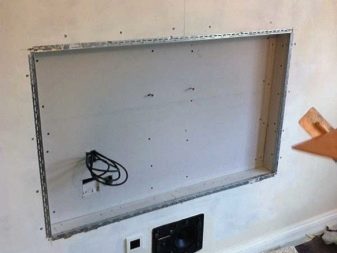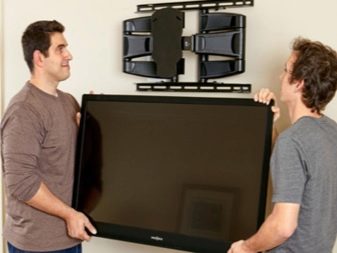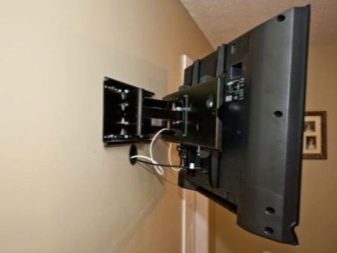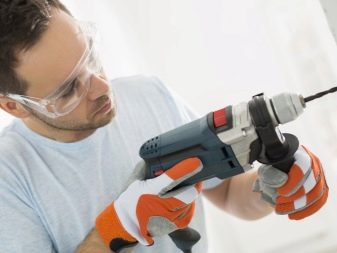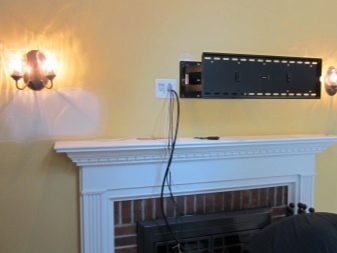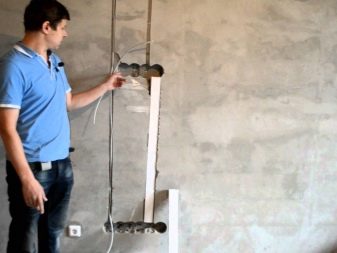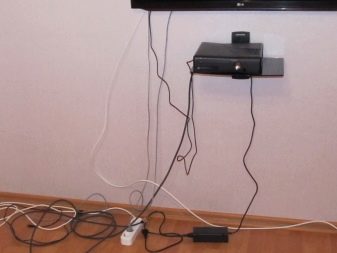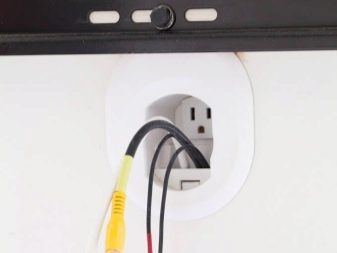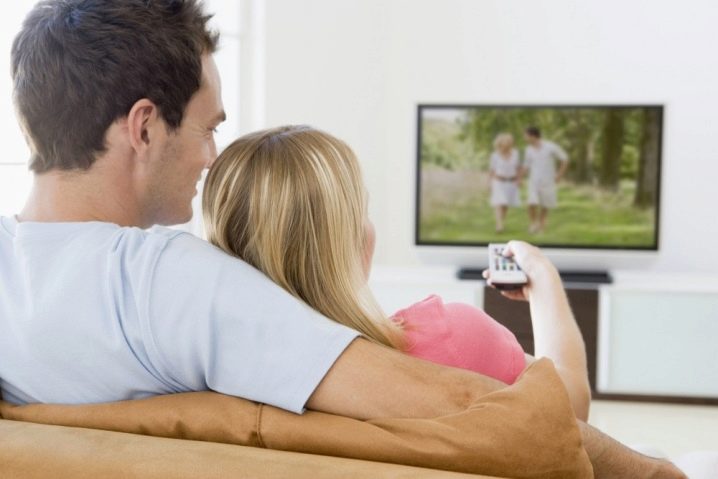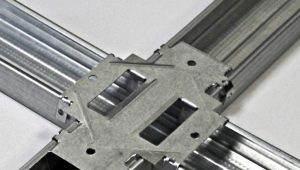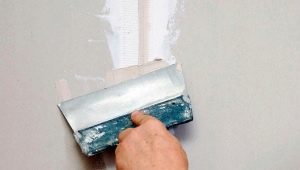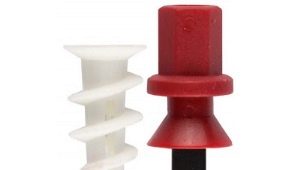Fasten the TV to the wall of plasterboard securely and neatly
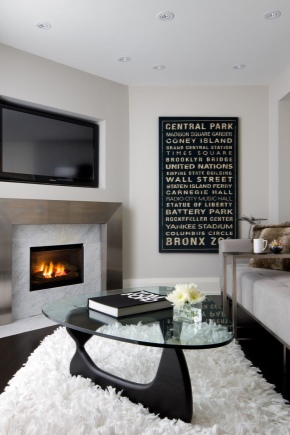
Drywall is a very popular material these days. It has many advantages: ease and simplicity in construction, a smooth surface, ease in processing. Among the shortcomings can only be called fragility. Often it is necessary to hang mounted shelves on the walls, mirrors, paintings and other items to design a cozy atmosphere. Even a television panel can be hung on a drywall wall.
Instruments
To mount the TV on a plasterboard wall, you must stick to a specific plan.
But first you need to prepare the following tools:
- different types of screws;
- expansion dowels (molly type), which are used to attach to the wall;
- mechanical expansion anchors for concrete;
- electric drill or hammer drill with drywall drills;
- set of screwdrivers;
- levels and plumbs of any type;
- small;
- magnetic die.
Special features
There are several of the most common ways to secure wall-mounting to a wall made of plasterboard. Attaching a small TV LCD panel to the wall is lightweight. Larger and heavier items are fixed using separate built-in niches or shelves. Both that and other method can be carried out due to use of a special arm.
This option has such advantages as:
- creating a more aesthetic look of the room;
- increase of useful free internal space of the room;
- ease of self-production;
- increase of functionality and practicality of use of space;
- cheap material.
Installation
The mounting of the LCD panel on the wall can be different. The most common types are:
- fixed;
- with swivel bracket.
Complete with bracket usually come with dowels made of plastic. It is strongly not recommended to use such dowels when attaching heavy objects to a plasterboard wall! Plastic dowels often do not withstand the stresses and breaks, which leads to the death of fortified expensive equipment.
TV weighing up to 15 kg
If you need to attach an LCD panel with a maximum weight of not more than 15 kg, then you can use the following installation option, which includes several basic steps, namely:
- it is necessary to determine the section of the wall on which it is planned to mount the panel;
- attach regular support elements of the panel that will bear the load;
- mark the boundaries of the dimensions of the location of the panel on the wall;
- level check the correct location of the panel on the wall;
- mark the mounting area on the wall;
Council It is worth making at least 6–10 marks for a better orientation during installation. They should be made on each side of the dimensions of the product and in the middle. The larger the panel has, the more marks will be required.
- drill a wall with an electric drill or perforator in accordance with the marks made.Most often used fasteners with a diameter of 12 mm;
- if you plan to use a molly dowel, then you need to unscrew the screws from them and place the dowels in the holes. To molly dowel opened, you need to pry off the cap with a screwdriver and pull it out;
- insert into the dowels and not tighten the screws to the very end;
- install the carrier plate of the panel in the normal position and fasten all parts of the structure without dragging them;
- Insert the guides into the grooves of the plate.
TV weighing no more than 10 kg
The process of installing a TV weighing no more than 10 kg on a tilt-swivel arm to occur according to a different scheme. In this case, it is necessary to take into account the weight of the device along with the bracket. This option can be used provided that there is a pre-reinforcement of the wall structure with an aluminum profile.
The procedure should be as follows:
- it is necessary to attach a magnetic plate to the wall and move it to find the embedded part;
- note the dimensions of the metal tab;
- mark the areas where the fastener will be installed and check the horizontal level of the structure;
- you do not need to drill holes in advance for fasteners, since you need to get as close as possible the pressing of the fixing surface of the product, the material of the walls (drywall) and the embedded part;
- re-screwing and unscrewing fasteners is unacceptable, since the fixation is weakened and the nest under the fastener is expanded;
- fasteners to the drywall to the limit do not twist, leaving a gap;
- insert the fasteners into the received gaps, then finally tighten the fasteners;
- hanging the TV on the bracket alone is difficult, since in 99% of cases the gap from the wall to the back of the TV will be so small that it will not allow working freely.
TV weighing up to 40 kg
It is not allowed to mount equipment weighing more than 15 kg on a wall entirely made of plasterboard for safety reasons. Such installation can only be done on walls reinforced with concrete, covered with frame panels. To install the TV panel weighing up to 40 kg, you must use the bracket.
The order of work includes the following actions:
- mark the area of the fastener;
- drill drywall with an electric drill;
- punch or hammer drill to pierce the main concrete or brick wall;
- hammer dowels of expansion anchors into the holes;
- screw the anchor up to the expansion elements of the dowel;
- Install the LCD panel on the wall.
To remove restrictions on the fastening of the permissible maximum weight, it is necessary to make structures that will withstand loads that exceed the standard ones. This may be the laying of an additional amplifying profile or provide for a niche for the future installation of embedded parts for the hinged equipment.
How to lay the wiring?
Everyone knows that the room is always equipped with sockets (connection points), which provide the power supply needed by household appliances. As a rule, they always install not only wall panels, but together with them other household appliances like DVD players, video cameras, Wi-Fi routers. For this reason, it is necessary to take into account the load on the wiring and provide for the installation of a larger number of connection points. It is possible that for placement you will need to hang up additional shelves. Before choosing the place of installation on the wall, it is necessary to take into account how the wiring will be carried out.
Posting can be represented by two types.
- Open This type does not meet the high aesthetic requirements, since the cables are carried out directly on the surface of the plasterboard walls.But such a wiring has an undeniable advantage - it will allow to complete the repair in a short time.
- Hidden. This kind of popular because it makes all wiring completely invisible to prying eyes, and this increases the aesthetic requirements, the room becomes neat. All cable wiring is removed in the ceiling and floor plinths, in sight only the places of their conclusions to the outside where necessary.
Important! Places wiring for connections organized in advance, at the stage of installation of drywall coating. To connect the installed TV to the power supply, it is necessary to take into account the length of the standard panel cable and the distance to the nearest outlet. The use of portable extension cords will not make the room more attractive.
Tips
The height of the LCD panel depends on the image quality and screen size. Below is a relative table of compliance:
Inches | Cm | 720x576 (DVD) | 1280x720 (720p) | 1920x1080 (1080p) |
19 | 48 | 1.50-2.00 m | 1.13 m | 0.75 m |
22 | 56 | 1.70-2.40 m | 1.31 m | 0.87 m |
26 | 66 | 2.00-2.80 m | 1.55 m | 1.03 m |
32 | 81 | 2.40-3.40 m | 1.90 m | 1.27 m |
37 | 94 | 2.80-3.90 m | 2.20 m | 1.47 m |
40 | 102 | 3.00-4.20 m | 2.38 m | 1.59 m |
42 | 107 | 3.20-4.50 m | 2.50 m | 1.66 m |
46 | 117 | 3.50-4.90 m | 2.74 m | 1.82 m |
50 | 127 | 3.80-5.30 m | 2.97 m | 1.98 m |
52 | 132 | 4.00-5.50 m | 3.09 m | 2.06 m |
55 | 140 | 4.20-5.80 m | 3.27 m | 2.18 m |
58 | 147 | 4.40-6.10 m | 3.45 m | 2.30 m |
I must say that the height of the location of the panel plays a big role. When watching TV in the sitting position, the top of the panel should be at least 1.2 m.When the process of hanging the panel on the bracket is completed, it is not necessary to let it out of the hands. You must ensure that the bracket is securely fastened. It is previously recommended how to test the strength of fasteners with excessive load.
See in the video how to install the TV on a plasterboard wall:
